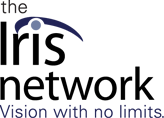- When speaking with a person who is blind (or visually impaired), there’s no need to feel uncomfortable using words like “see”, “look” and “blind” as you normally would in conversation.
- You may want to introduce yourself when greeting someone who is blind so they know with whom they are speaking.
- Speak directly to a person who is blind, not through another person.
- People who are blind or visually impaired are not endowed with other highly developed senses and skills; the loss of eyesight leads to learning to do familiar tasks and/or use other senses differently.
- Children/youth who are blind or visually impaired and attend public schools may work with a Teacher for the Visually Impaired (TVI).
- Adults who are blind or visually impaired can live alone or work independently pursuing educational and career goals.
- People who are newly blind or visually impaired can adjust to living and working with vision loss.
- People who are blind or visually impaired are supported with specialized training by professionals such as Certified Vision Rehabilitation Therapists (CVRT) along with adaptive daily living aids and devices.
- Certified Orientation and Mobility Specialists (COMS) teach independent travel skills to help people who are blind or visual impaired, navigate their environment.
- Braille, large-type print, computerized speech readers, audio books, talking watches, code readers, video magnifiers, and other adaptive devices or accessible technology are available.
- Some people who are blind or visually impaired use guide dogs; others travel around their communities by using a white cane. They travel on public transportation and can also enjoy theater (some have headsets so they can listen to descriptive dialogue) and other cultural and community events.
